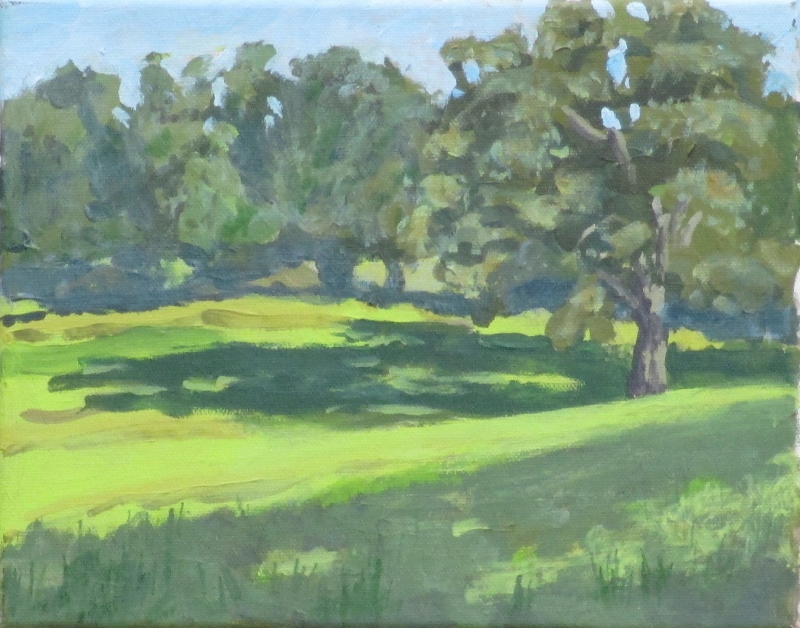It has something to do with the way our brain works. I’ve seen it done and even done it myself a few times. I know it when it happens, and I know things about the circumstances, but I do not know quite why. I believe, oddly enough, that the effect is most pronounced when the two-dimensional offering is clearly not photographic. One facet or another of the painting takes on the perceptual glow of illusion—realism is too weak a word here. It seems appropriate to think of the experience as a near hallucination.
There is a story of George Washington at the Pennsylvania Academy of Art. He turned toward a full length painting by Charles Wilson Peale of two figures descending a staircase and bowed politely, before recognizing that it was a painting to which he was responding.
I believe that Washington was deceived because he saw the image out of the corner of his eye; his full power of perception was not in play. The examples in my own work that put me into the scene, so to speak, are also more suggestions than full disclosure. And the work seems to have a stronger effect in person than a copy on the monitor.
This first happened to me long ago with one of my own ink line drawings. It was a simple rendering of a woman, but one of the eyes had needed correction, so I had overworked it a bit. Upon contemplating that drawing some time later, that eye took on a life, most convincingly. I will post that drawing one of these days.
My example for this post is a little green pasture-scape. The brushstrokes are unsophisticated, the edges are unsoftened, there is scant detail; and yet there is something that causes us to feel that slope retreating from us, then swinging around to settle under the big tree. What is that? I will take credit for the greens working, and for the composition that draws you in and around, but if you are getting that something extra, the little hallucination of actual depth, then you can take credit for conjuring that inside your own head. (If you are not getting the effect, maybe you need to take this little picture home with you.)
I do not aspire to trompe l’oeil as a genre. What fascinates me is not the possibility of fooling the eye—I know that can be done fairly easily with flat subjects—but of showing perception to itself. The viewer recognizes a painted surface for what it is, and yet at the same time is compelled to perceive something beyond the work.
I believe that this bit of magic has been part of the human experience for a long time. I am convinced it was a factor in the cave paintings. And I am not the only artist who feels that the sketches he brings home from a trip are a more evocative record of his travels than hundreds of photographs. Perceptual enchantment has not been, for a very long time, the primary objective in the creation of artistic images, and I do not believe it should be. But it is fascinating, and there is likely something that happens inside of us in the presence of any depictive work—why else does representational art continue to interest us in spite of the strident politics of non-objective art throughout the last century?
We can’t all be stupid…can we?
I would like to continue thinking about this. (Illusionism. I already know how stupid we are.)

 RSS Feed
RSS Feed